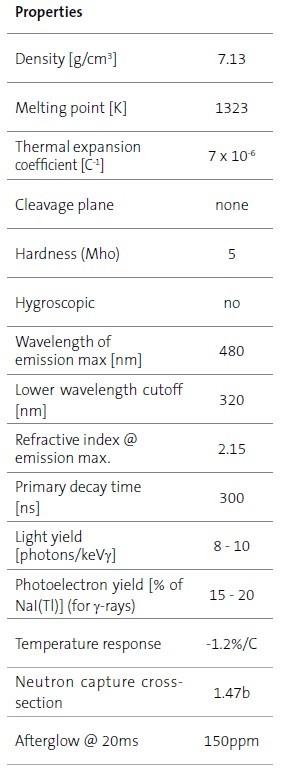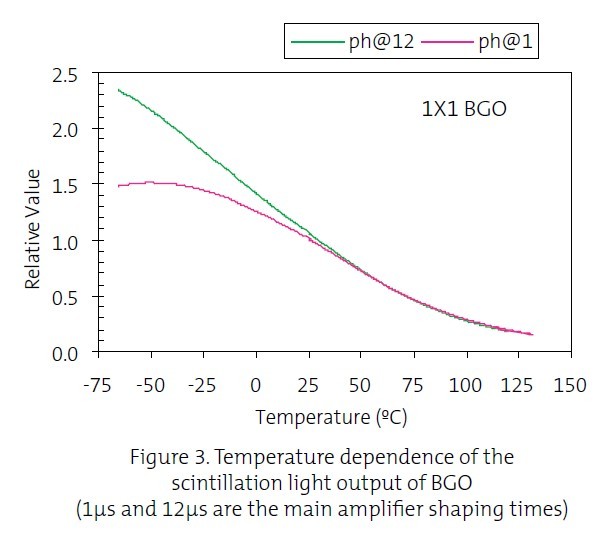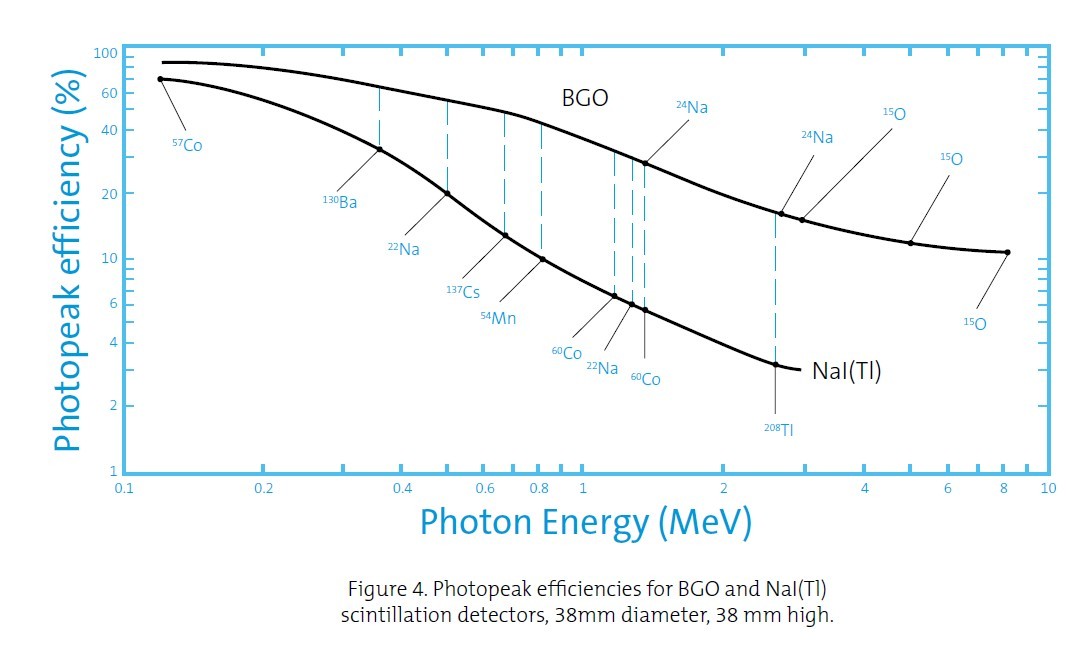Bismuth Germanate
Scintillation Material
Bismuth Germanate (BGO) is a high Z, high density scintillation material with chemical composition Bi4Ge3O12. Due to the high atomic number of bismuth (83) and its high density, BGO is a very efficient γ-ray absorber.
BGO is a relatively hard, rugged, non-hygroscopic crystal which does not cleave. The material does not show any significant self-absorption of the scintillation light. BGO can be machined to various shapes and geometries. The crystal housing can be simple since no hermetic sealing is required.
The scintillation emission maximum of BGO is situated at 480nm. Figure 1 shows the emission spectrum. The light emission in photons/keV is about 15-20% of NaI(Tl). But, since the emission is partly in the area above 500nm where phototubes are less sensitive, the relative photoelectron yield of a bialkali PMT compared to NaI(Tl) amounts to 10-15%.
Figure 2 shows a pulse height spectrum obtained by irradiating a BGO crystal with 662 keV γ-rays.
Due to the high Z value of the material, the photofraction for γ-ray absorption is high, and BGO scintillation crystals are used in applications where a high photofraction is required (for example, PET scanners) or because of its high detection efficiency (for example, Compton suppression spectrometers). It is a combination of properties that make BGO the material of choice for neutron activation analysis. Figure 4 shows the photopeak efficiency (also called the photofraction) – the ratio of the number of counts in the total absorption photopeak to the total number of counts as a function of the γ-ray energy for 38mm diameter, 38mm high (1.5" x 1.5") NaI(Tl) and BGO crystals.
The decay time of BGO is about 300ns at room temperature, which is comparable to that of NaI(Tl). As there is no slow component in BGO and the rise time is quite fast (intrinsic scintillator), it is possible to get good timing <2ns with 3” thick crystals.
BGO
Bismuth Germanate
Scintillation Material
The scintillation intensity of BGO is a strong function of the temperature. Figure 3 shows the relation. At room temperature, the rate of change with temperature is approximately -1.2%/C.
The radioactivity in BGO can make BGO unacceptable for some applications. We have developed a production process that significantly reduces the natural background, making our BGO well-suited for most applications.
BGO scintillation crystals are susceptible to radiation damage starting at radiation doses between 1 and 10 Gray (102 - 103 rad). The effect is largely reversible with time or annealing. Since the radiation damage to BGO crystals depends on the presence of sub ppm impurities, large differences between individual crystals can occur.
It is possible to read out BGO crystals with silicon photodiodes but, due to the moderate light output, this is only useful for the detection of high energy particles, or photons of more than a few MeV.

NOTICE: We can customize various sizes of crystals according to the demand of the customers.
More:
